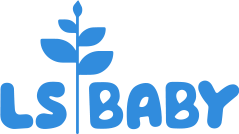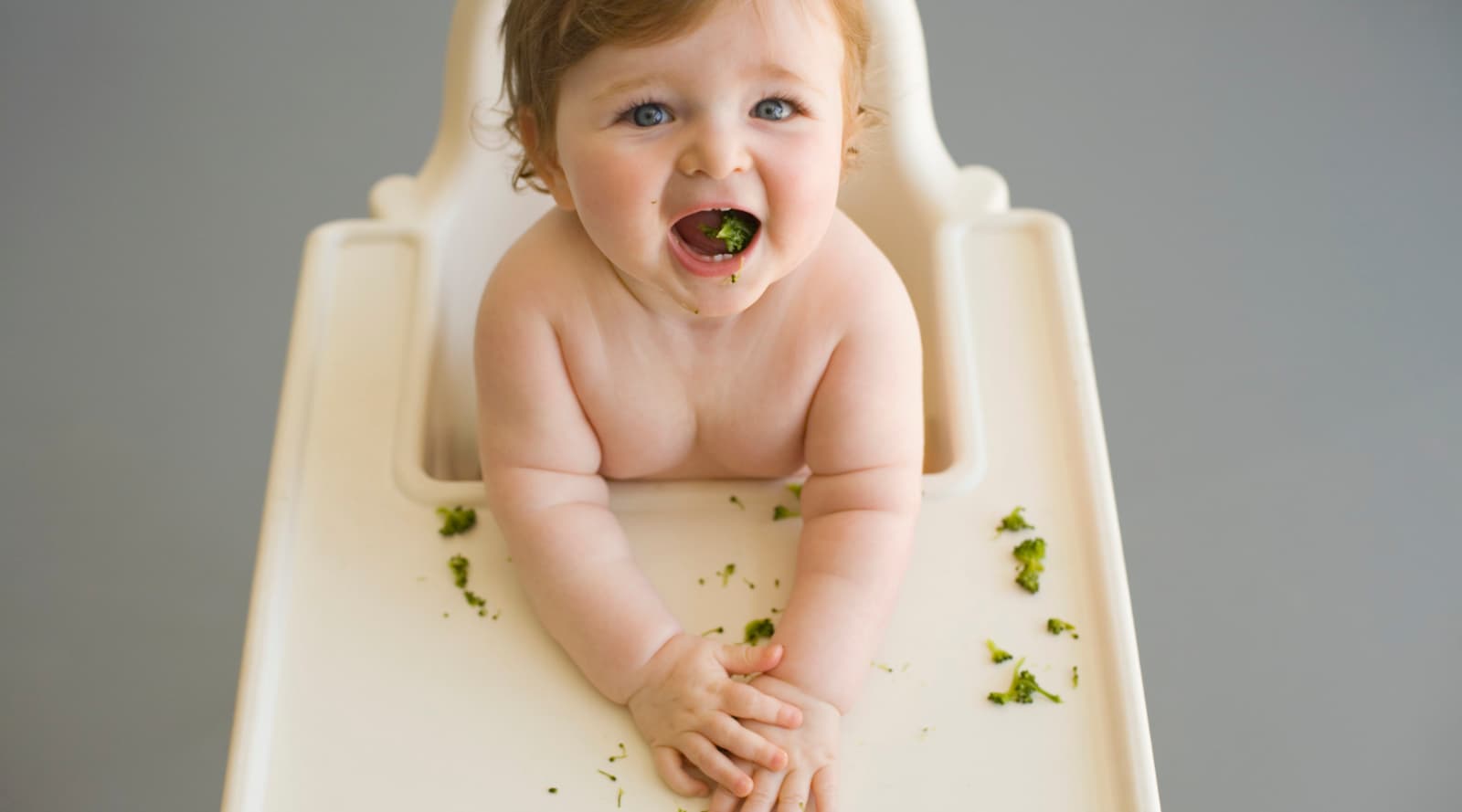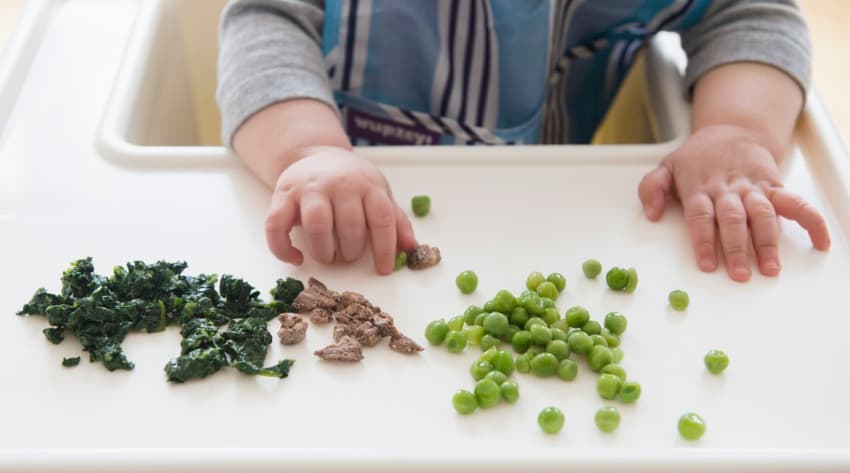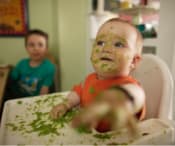Baby-led weaning is all about letting your little one try finger foods and letting them feed themselves rather than spoon-feeding them with purees. Some mums and dads might just start weaning their little one this way, or you might want to do a combination of both.
Baby-led weaning teaches babies how to chew (or at least gum!) foods and try different tastes and textures, in addition to their usual milk.
You might have started noticing your baby is interested in your food or their older brothers’ and sisters’ meals. They might have even started trying to take the odd bit of manageable food from their plates. If so, the time is right to begin baby-led weaning. You may have even started baby-led weaning without realising by giving them small bites and bits of food to hold and eat for themselves. However it happens, it’s a sign your baby is ready to try some tasty solid foods.
When to start baby-led weaning?
It’s safe to start baby-led feeding at around six months and a good time to do it is meal times! Food that can be easily picked up is a great option (broccoli has a natural handle, plus you might make your baby a veggie fan for life!) Don’t be worried if little one doesn’t really know what to do with the food you give them just yet; they may play with it or give it a bit of a suck. It’s a great way for them to explore the different tastes and texture of food.
The benefits of baby-led weaning are many; baby can be part of the family mealtime and feel they are eating similar food to their parents (babies love to mimic their parents). It also gives your baby exposure to explore tastes, textures, colour and smell of food and can also help to develop hand-eye coordination. Just go with the flow and make sure your little one is ready for the delights of broccoli and other healthy, fun finger foods.
Tastes and textures
Check out our tips below about what sort of foods to choose when baby-led weaning, and don’t be afraid to offer your little one food with different tastes and textures.
From around eight months, you can try more lumpy foods, for instance. Generally, babies who have tried lots of different foods early on are less likely to tip their food bowl all over you and reject what you’ve served them when they’re older (that’s the theory anyway!)
Baby’s safety and baby-led weaning
The mess is all part of the fun of having a baby, right? They’ll be lots of dropped and spilt food as you get your baby used to baby-led weaning. Keep an eye on their food intake, and make sure you keep going with the milk so that they’re not going hungry.
It’s very natural to worry about your baby choking during baby-led weaning, but there’s no more risk of it happening if your baby is feeding themselves versus being fed with a spoon. The risk of your baby choking is minimal, as by six months they can move food to the back of their mouth themselves, but it’s a good idea to know what to do in case of an emergency. Make sure they are sitting upright at mealtimes and offer cooked foods for now. If you are concerned about some food being choking hazards such as peas, gently squash them with the back of fork before giving them to your baby.
Baby-led weaning may not be suitable from an early age if your baby was premature or you have a family history of digestive problems. Your baby should love trying out new food for themselves, so long as you don’t mind a bit of mess!
Our baby-led weaning tips
Here’s a few top tips:
-
Start off with some soft, easy-to-eat vegetable finger foods, well-cooked carrot sticks, for instance.
-
When it comes to deciding which foods to feed when baby-led weaning, avoid hard foods like raw carrot and apple to begin with, soft foods which can be easily swallowed are the first go-to foods.
-
Try soft fruit with no added sugar, soft veg, manageable pieces of hard-boiled egg, potatoes, pasta, beans, lentils, soft and boneless well-cooked bits meat and fish and sticks of pasteurised hard cheese can all be on the menu.
-
Don’t be too alarmed if your baby gags a little when trying new solid foods. Make sure they’re okay and that you know what to do should they choke on some food. Don’t leave them alone when they’re eating.
-
Your baby will love eating what you and the rest of the family are (providing it’s not a vindaloo or a lovely red-wine infused pasta dish!), so you can give them manageable bits of the family meal.
-
It’s going to be messy, so think about getting some floor mats and plastic bibs.
Enjoy the experience! It’s all about your baby trying new experiences and tastes. You never know you might end up with a brussels sprout loving teenager in the future! And remember, at this stage of baby-led weaning, it’s not about how much your baby eats, as they’ll still be getting most of the nutrients they need from their milk.









